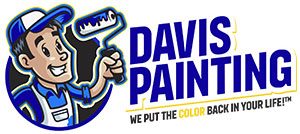Is $20 an Hour the New $10 an Hour?

In recent years, the conversation around fair wages and workers’ rights has gained unprecedented momentum. One of the central themes emerging from this dialogue is the push for a higher minimum wage. While $15 an hour has been a common rallying cry, a growing number of advocates argue that $20 an hour is the new benchmark for a fair and livable wage. In this blog, we’ll explore the reasons behind this shift and why $20 an hour is the new $10 an hour.
Cost of Living Increase
The most straightforward argument for a $20 minimum wage is the rise in the cost of living. Over the past few decades, the cost of housing, education, healthcare, and other essentials has skyrocketed. A $10-an-hour wage simply doesn’t stretch as far as it used to, leaving many workers struggling to make ends meet. A $20 minimum wage reflects a more realistic and equitable compensation in line with the increased cost of living.
Economic Stimulus
Paying employees a higher wage doesn’t just benefit workers; it can also stimulate the economy. When workers have more disposable income, they are more likely to spend money on goods and services, boosting demand and supporting local businesses. This cycle of increased consumer spending can have a positive ripple effect on the overall economy.
Reducing Income Inequality
Income inequality has been a growing concern globally, and raising the minimum wage is seen as a key strategy to address this issue. A $20 minimum wage helps bridge the gap between the lowest earners and those at the top, creating a more balanced distribution of wealth. This, in turn, can lead to a more stable and harmonious society.
Employee Retention and Productivity
Paying employees a higher wage can lead to increased job satisfaction and loyalty. When workers feel that their compensation reflects their contributions and the value of their time, they are more likely to stay with a company for the long term. Higher wages can also boost productivity, as employees may be more motivated and engaged in their work.
Raising The Standard
Advocates argue that setting the minimum wage at $20 an hour sets a new standard for what is considered a fair and livable wage. This shift challenges businesses to reassess their pay structures and prioritize the well-being of their employees. As more companies adopt this standard, it could contribute to a broader societal shift towards fairer compensation practices.
The call for a $20 minimum wage represents a fundamental shift in the way society values and compensates its workers. As the cost of living continues to rise and income inequality remains a pressing concern, paying employees $20 an hour is not just a matter of economic necessity but a moral imperative. By recognizing the intrinsic value of every worker and ensuring they receive a fair wage, we can build a more equitable and prosperous future for all.
Davis Painting finds great importance in paying our employees well, as they are the face of our company and we could not function without them. To read more about the story and values behind Davis Painting, delve into a recent Forbes article written by our very own CEO!
We are always looking for motivated and reliable people to join our Davis Painting team. Apply here to join us!


